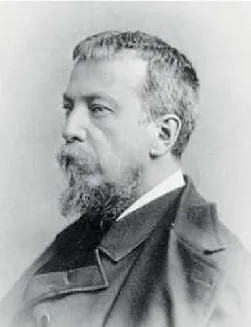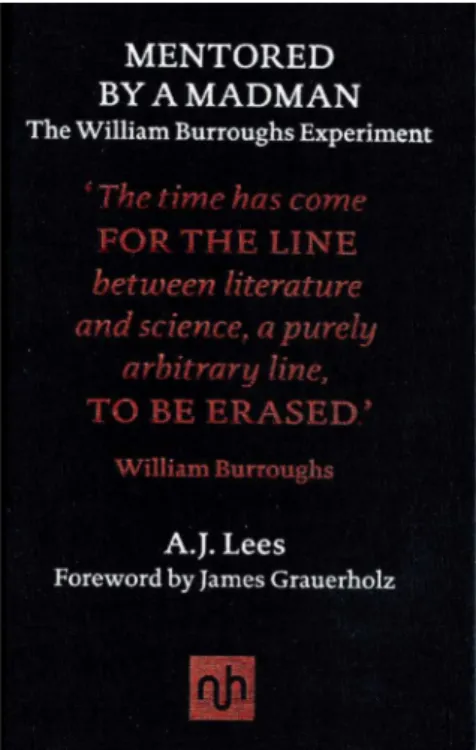1035
DOI: 10.1590/0004-282X20160160
HISTORICAL NOTE
Charcot, Mitchell and Lees: neurology
free thinkers and their experiences of
psychoactive drugs
Charcot, Mitchell e Lees: livres-pensadores da neurologia e suas experiências com drogas
psico-ativas
Hélio A. G. Teive1, Francisco M.B. Germiniani1, Pedro A. Kowacs2, Renato P. Munhoz3
he relationship between neurology and the use of psy
-choactive drugs is the subject of widespread discussion nowadays. Various articles have addressed the neurologi
-cal complications induced by illicit abuse of drugs such as opioids, psychostimulants, marijuana, sedatives, halluci
-nogens, inhalants and related agents1
. Much attention has been dedicated to the intrinsic mechanisms involved in the transition from the recreational use of drugs to progressive addiction2
.Furthermore, there is a plethora of studies on the medical use, particularly in neurology, of certain psy
-choactive drugs, such as cannabis and cannabinoids3
. his complex context includes historical references to the use of certain psychoactive drugs by famous neurologists to study and record the efects of these substances for themselves. Here, we briely discuss Jean-Martin Charcot’s and Silas Weir Mitchell’s personal explorations with psychoactive drugs in the 19th century and Andrew J. Lees’ similar ven
-tures in the 21st century.
JEAN-MARTIN CHARCOT AND HASHISH
Jean-Martin Charcot (1825-1893) is considered the founding father of neurology, as well as the irst professor of nervous system diseases4
(Figure 1), His contributions to the descriptions of several nervous system disorders are world famous. He studied a wide range of neurological diseases, including amyotrophic lateral sclerosis (Charcot’s disease), multiple sclerosis, Charcot-Marie-Tooth disease, tabetic arthropathy, Parkinson’s disease and hysteria4,5. His biog
-raphers described him as having an austere presence and reserved manner and being shy and economic in his ges
-tures with an impenetrable, impassive face and authoritar
-ian personality. Charcot also had a great interest in bizarre, supernatural and exotic behaviors4,5. In 1853, he and a fellow
medical student tried smoking hashish to understand the efect of this drug and the sensation of insanity it produced4,5.
Henry Meige published a description of Charcot’s hashish
1Universidade Federal do Paraná, Hospital de Clínicas, Departamento de Medicina Interna, Serviço de Neurologia, Unidade de Distúrbios dos Movimentos,
Curitiba PR, Brasil;
2Universidade Federal do Paraná, Hospital de Clínicas, Serviço de Neurologia, Unidade de Dor de Cabeça, Curitiba PR, Brasil; 3University Health Network, Toronto Western Hospital, Gloria and Morton Shulman Movement Disorders, Toronto, ON, Canada. Correspondence: Hélio A. G. Teive; Rua General Carneiro, 1103 / 102; 80060-150, Curitiba PR, Brasil; E-mail: hagteive@mps.com.br
Conflict of interest: There is no conflict of interest to declare. Received 14 August 2016; Accepted 05 September 2016.
ABSTRACT
Three world-famous neurologists, Charcot and Mitchell, in the 19th century, and Lees, in this century, all of whom had great scientific
curiosity, experimented with the psychoactive drugs hashish, mescal and yagé, respectively, in an attempt to increase their knowledge of neurological diseases and how the brain works.
Keywords: neurology; psychotropic drugs, brain.
RESUMO
Três mundialmente famosos neurologistas, Charcot e Mitchell, no século XIX, e Lees neste século, tiveram eles mesmos, experiências com drogas psico-ativas, com haxixe, mescalina e yagé, respectivamente, demonstrando a sua intensa curiosidade científica, na tentativa de aprimorar o seu conhecimento da função cerebral e das doenças neurológicas.
1036 Arq Neuropsiquiatr 2016;74(12):1035-1038
experiment in 1898, in which he emphasized Charcot’s illu
-sions and hallucinations in the following excerpt6
:
“…the words become illegible; the strokes of the
let-ters lengthen, twist upon themselves…are transformed into petals of lowers and snatches of architecture… he entire page is covered in drawings: monstrous drag -ons, grimacing chimeras, incoherent people in a fantas-tic whirlpool, which recalls the apocalypfantas-tic composi-tions of van Bosch or Jacques Callot” 6
.
Charcot’s drawing produced under the inluence of hash
-ish is shown in Figure 2.
SILAS WEIR MITCHELL AND MESCAL
Silas Weir Mitchell (1829-1914) was a very famous and celebrated neurologist in the United States of America and made important contributions to the development of 19th
century neurology5 (Figure 3). Among his seminal works
are the description of causalgia (complex regional pain syn
-drome), phantom limb and nerve injuries, as well as stud
-ies in neuropharmacology and neurotoxicology5. He was
involved in the opening of the irst neurological hospital in Philadelphia, in the USA, and in the foundation of the American Neurological Association, of which he was the irst elected president, in spite of never having had a univer
-sity professorship5. Silas Weir Mitchell was also a proliic and
renowned writer of novels and short stories5. In 1895, at an
American Neurological Society meeting, he gave a descrip
-tion of the efects he experienced after ingesting mescal, which was published in 1896 in the British Medical Journal
as “Remarks on the Efects of Anhelonium Lewinii (the mes
-cal button)”7
(Figure 4). In this report he described several times his impressions of mescal intoxication, including gas
-tric discomfort, lushing of the face, dilated pupils, a sense of exhilaration, a tendency to talk, a pleasing sense of lan
-guor, yawning at times and some frontal pain7
. He described another episode as follows:
“My irst vivid show of mescal colour efects came
quickly. I saw stars, and then, of a sudden, here and there delicate loating ilms of colour – usually delightful neutral purples and pinks. hese came and went – now here, now there. hen an abrupt rush of countless points of white light swept across the ield of view…hen I began to see zigzag lines of very bright colours, like those seen in some megrims…” 7.
(Reproduced from Google Images: Partíceps, October, 12th, 2016)
Figure 1. Jean-Martin Charcot (1825-1893).
(Reproduced from Google Images: Art Prints, October, 12th, 2016)
Figure 2. Charcot’s drawing produced under the influence of hashish.
(Reproduced from Google Images: Wikipedia, October, 12th, 2016).
1037
Teive HAG et al. Charcot, Mitchell and Lees and psychoactive drugs
ANDREW J. LEES AND YAGÉ (AYAHUASCA)
Andrew J. Lees (1947 - ) is a professor of neurology at the National Hospital for Neurology and Neurosurgery, Queen Square, London, and the University College London, in the United Kingdom8 (Figure 5). He is a world-famous
neurologist and neuroscientist with a dedicated interest in the movement disorders field, having received several awards, including the American Academy of Neurology Lifetime Achievement Award, the Association of British Neurologists Medal, the Dingebauer Prize for Outstanding Research and the Gowers Medal8. Throughout his prolific
career, he has published over 600 papers, including an out
-standing number of masterpieces in the field of movement disorders, particularly Parkinson’s disease. Professor Lees is considered the world’s most highly cited Parkinson’s disease researcher9. Among his most cited works on
Parkinson’s disease are “Ageing and Parkinson’s disease: substantia nigra regional selectivity”, published in 1991, “Accuracy of clinical diagnosis of idiopathic Parkinson’s disease: a clinico-pathological study of 100 cases”, pub
-lished in 1992, and “The relevance of the Lewy body to the pathogenesis of idiopathic Parkinson’s disease”, published in 199810. He has authored several books, including Ray of Hope; The Hurricane Port – A Social History of Liverpool; William Richard Gowers 1845-1915 – Exploring the Victorian Brain; and Mentored by a Madman: The William
Burroughs Experiment, published in 20168 (Figure 6). This
last publication describes a “new journey of radical empir
-icism, with new scientific perspectives”, that chronicles an excursion to the Colombian Amazon Forest during which
he experienced a “yagé trip”8. He drank the sour dark liq
-uid and then described an intense nausea associated with motion sickness and a “near death” sensation8. He wrote:
“A soft whistling incantation breaks the silence. Yellow
and green iridescent zigzag spectra and indigo and argent helices are under my eyes, ultramarine charges come out of my arms. …he lashes of beauty intensify as I stagger from the lodge… Phosphenes, coiled loat -ing chains and aerolitos lash above me. Images unwind from the windmills of my mind” 8.
(Reproduced from British Medical Journal, 1896)
Figure 4. Mitchell’s paper about the effects of mescal.
(Reproduced from Google Images: UCL, October 12th, 2016)
Figure 5. Professor Andrew J. Lees (1947 - ).
(Reproduced from the authors´s book)
1038 Arq Neuropsiquiatr 2016;74(12):1035-1038
Acknowledgments
he authors thank Professor Andrew J. Lees (UCL, Institute of Neurology, National Hospital for Neurology and Neurosurgery, Queen Square, London, UK) who made a criti
-cal review of this manuscript. In conclusion, driven by deep scientiic curiosity, the
descriptions of the altered perceptual states under the inlu
-ence of psychoactive drugs hashish, mescal, and yagé by these three famous neurologists, can be seen as experiments and neuroscientiic-biased windows into their pharmacolog
-ical and behavioral efects in the human brain.
References
1. Brust JC. Neurologic complications of illicit drug abuse. Continuum (Minneap Minn) 2014;20(3 Neurology of Systemic Disease):642-56. doi:10.1212/01.CON.0000450971.99322.cd
2. Pascoli V, Terrier J, Hiver A, Lüscher C. Sufficiency of mesolimbic dopamine neuron stimulation for the progression to addiction. Neuron. 2015;88(5):1054-66. doi:10.1016/j.neuron.2015.10.017
3. Benbadis SR, Sanchez-Ramos J, Bozorg A, Giarratano M, Kalidas K, Katzin L et al. Medical marijuana in neurology. Expert Rev Neurother. 2014;14(12):1453-65. doi:10.1586/14737175.2014.985209
4. Goetz GG, Bonduelle M, Gelfand T. Charcot: constructing neurology. New York: Oxford University Press; 1995.
5. Goetz GG. Jean-Martin Charcot and Silas Weir Mitchell. Neurology. 1997;48(4):1128-32.
6. Meige H. Charcot artiste. Nouvelle Iconographie de la Salpêtriére. 1898;11:489-516.
7. Mitchell SW. Remarks on the effects of anhelonium lewinii (the mescal button). Br Med J. 1896;2(1875):1625-9.
8. Lees AJ. Mentored by a madman: the William Burroughs experiment. London: Nothing Hill; 2016.
9. Sorensen AA, Weedon D. Productivity and impact of the top 100 cited Parkinson’s disease investigators since 1985. J Parkinsons Dis. 2011;1(1):3-13.
doi:10.3233/JPD-2011-10021

